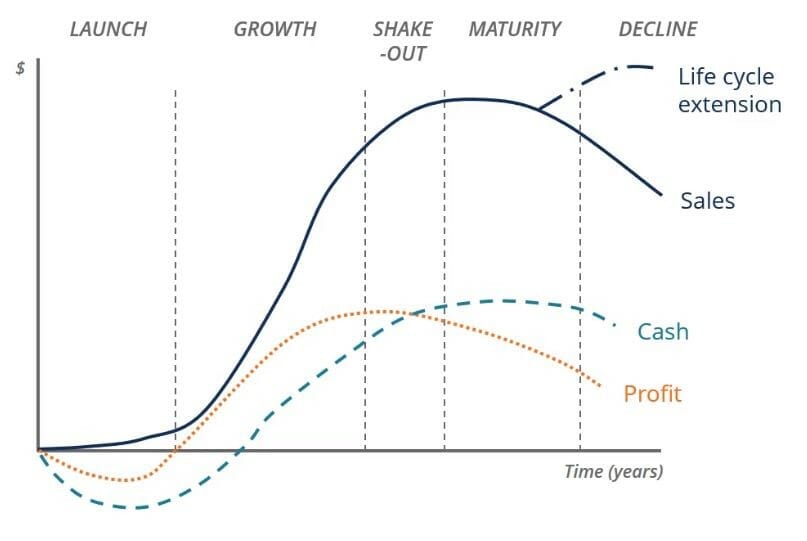
In a world where money is going to constantly flow to the hands of the few, learning how to quit is likely one of the most important skills in life. While the tone of our blog will not make people happy and they will believe that ego is a big reason for this… Quitting actually requires consistent ego destruction. Quitting means you’re giving up on something you thought you’d be good at and being self aware enough to realize you’re not going to be at the top of the field. This can range from basic things such as sports to major things such as writing, math, presentation skills etc. With that backdrop we can structure a way to quit before you waste valuable time learning a skill that won’t get you anywhere.
Skills That Must Be Learned: There are a few things that are required for a successful life: decent social skills, decent sales skills and decent comprehension skills. These three are “unavoidable”. Even if you struggle with one or two of the three major skills, it doesn’t matter. You. Have. To. Learn. It. There are no exceptions to these three items. If you don’t have decent social skills you’ll fall behind in your personal life and you’ll put a ceiling on your professional life as well. If you don’t have decent sales skills, you’ll lower your long-term earnings as an interview and an actual sales job are the same (Selling yourself vs. Selling a product). Finally, comprehension skills are significant (learning new things quickly). Oddly, the last one is largely ignored. School teaches you to nit-pick and find exceptions to the rule which forces you into poor comprehension skills. Not being able to comprehend is a guarantee that someone will fail. Searching for exceptions that break the framework makes it impossible to build a success framework… since there are always exceptions.
Skills That Are Not Necessary: Athleticism, multiple languages and musical skills. While these three items are all great and amazing to have, they actually aren’t as necessary as they appear. If you’re staying in shape and can communicate extremely well with the english language… you’re perfectly fine. Spending time on these three items should be deemed a hobby not a priority. If you’re lucky enough to be elite at athletics, musical skills or other things that can actually create monetary value (scholarships, legitimate chance at being a pro) then it’s worth it. But. Please see rule skill number three above regarding comprehension. The vast majority do not fit into the top 1-0.1% in athleticism or musical skills so it’s not a *necessity* it is a nice to have. Being healthy (working out consistently and staying in incredible shape are important) being an amazing musician? Not so much unless you are truly talented enough to earn significant amounts of money.
Basic Structure: With the basic three items out of the way we have to create some guidelines. The first guideline is clear as day, if you try a new activity for the first time and are *not* above average… you should quit. Not kidding. If you try something for about a week or two and find that you’re not above average relative to the peer group, you’re not talented in that activity. The second guideline is that you should only try activities that will help you later on in life. Being talented at drinking games and bowling is not a good use of time (fun fact, professional bowlers make around $30,000 a year… not worth the time drain). The third and final guideline is to find similarities between your skills, if you’re at math, software coding is probably a good idea. If you’re good at sales, moving towards presentations is likely a good idea. If you’re good at Ethnic Studies, you’ll probably be broke forever so you’ve wasted four years of your life. So on and so forth.
The Quitting (Winning) Formula for Business: With the most important overarching guidelines completed up front we can now go into a step by step process for quitting and moving onto the next thing. For this example we’re going to go ahead and use businesses since we hope that’s engrained in everyone’s brain (no ownership, no equity, no riches for you).
Step 1 – Start Idea: The vast majority of people will never start. They will use 95% of their time reading and “thinking” about how to proceed and never actually begin. This is because we’re taught from a young age that reading is “learning” when it isn’t. You can learn how to swing a golf club from 100 books but the guy who spent 100 hours practicing will still win even if his swing isn’t perfect (learning is 80-90% doing and 10-20% reading to fix problems).
Once the business is started (does not matter what it is), you want to see immediate growth within the first month or two. This is just how it works. It even works with blogs that gain decent popularity. If this is not the case and you’ve marketed/bought traffic with no interest in the product/service… you can go ahead and quit now. It is *generally* a bad idea if there is no growth within ~2 months of any new idea. We’re not saying it has to make millions, it just needs to grow in terms of viewers/customers.
Step 2 – Find the Interest Point: We’ll use this blog as an example. While we have steered away from people interested in getting to the first million (since we’re far past that) we noticed a common complaint: people wanted these ideas back. This makes logical sense as the percentage of people who have a million dollars is likely in the single digit range (even in the USA) which made the new ideas un-relatable. For your idea (whatever it may be) you have to figure out what exact item/service they are looking for. Criticism from people on Twitter, your friends, your family do not count for anything. Again. None of those criticisms are worth a penny. The only people you should listen to are the people who purchase your products. If they have not spent any money with your business/service, delete all of their opinions entirely. Smile, nod, agree and ignore.
At this point you should be moving from “initial launch” to growth. This means you’ve pinpointed the exact product/service that people want and now you’re looking for increased interest due to *product quality*.This is very important. If you’ve done this correctly it means that you’ve found a small area to add value and people will then recommend your product consistently. The graph below does a great job of explaining how this looks in terms of growth… And. If you see no growth after pinpointing what was wanted… it’s time to quit yet again.

Step 3 – Find New Interest Points: Assuming that your first idea was successful (very unlikely so don’t be surprised if you quit multiple ventures before succeeding), it’s time to look for new ideas. Your first idea will give you a clear sense of the target audience you serve and if you want your business to grow you have to come up with new products/services/offerings. Either expand the total addressable market or expect declines in the future.
This is a virtuous cycle for a short period of time and usually leads to a big increase in ego. This is also usually the peak. When you see revenues decelerate (no longer going up every year) and begin to turn flattish, you’re better off selling the asset. Our guess is you’ll make the same mistake we made with our first idea. You’ll try to look for other options to expand the market but it goes too far away from your core competency. This leads to no results and you end up having revenues come down (from peak) to a lower level but still heavily in the green. Since you missed your shot at selling for a high valuation, you have to keep it and let it generate money. In short, if you see revenues increase at a rate that is unsustainable relative to your target audience (be realistic!) it’s time to quit (sell).
Step 4 – The Slow Quit: If you didn’t sell at or near the top, you’re stuck in a weird situation where you’re not motivated and you’re not willing to sell it anymore. The multiples for a declining business are so low that you’re better off doing a mediocre job and collecting the income. If you’ve ever wondered why so many declining businesses exist… Now you know. They exist because the net income and cash flow is still positive so there is no incentive to shut them down even if margins are low.
This results in what we all the “slow quit”. You want to radically reduce the amount of time you spend on the project to the point that it’s a bit annoying. You’re annoyed (slightly) at the maintenance tasks but when the money clears at the end of the month you’re reminded of why it is worth it. This is the right balance. Similar to a private equity firm gutting the OPEX to generate cash flows, you’re slowly bleeding out the asset over time. The good news? If this was your first successful product, you’re going to be amazed at how much is made over the next 5 years as the business goes flat. Your income generated relative to effort goes parabolic/vertical. Lesson learned, always sell when the knee in the curve is hit.
The Quitting (Winning) Formula for the Office: Many of you likely have office jobs, this isn’t anything to be ashamed of. Everyone has to start somewhere and no matter how much we talk about ownership and *event* driven income, starting with an hourly wage or a career is likely. Very likely. Instead of focusing on the hourly positions (not our target audience) we’ll outline the Quitting formula for your career. Before beginning, remember that we *assume* you do not have a side income. If you start a business on the side, as soon as it makes about 2x your work income, you’re free to quit at any time. If your side income equals your work income, usually better to continue both.
Step 1 – Politics: Before beginning, a large chunk of success in any major corporation comes down to politics not performance. While we’ve stopped playing these games a long time ago both of these posts are valid today, politics #1 and politics #2. The long story cut short is that you have to get on the right side politically on day one. The two posts with the links tells you how to do this (finding the top performers and attaching yourself to them while decreasing interactions with weaker performers). In a nutshell, if you’re not on the right side politically within a year… Time to Quit!
You’d think that we’d fill this section up with craziness. Such as “try to get into the right group over time”. But. It just doesn’t work that way. Within corporations you get labeled and marked relatively quickly. So in the case of investment banking for example, you have a 2-year analyst stint so if you’re not in the right section politically, be ready to leave when your time is coming to an end.
Step 2 – Up or Out: You know the rules. If you’re ever passed up for a promotion it is also time to quit! This does not mean you suddenly walk out the door. It means you’re going to look for a similar or better position at another firm. Do not fall for the lies they will feed you about “the next one being around the corner”. If the next one is really around the corner, when you turn in your resignation, they will offer you the promotion (hint: 95% of the time they won’t).
Before moving on from this clear sign to leave, you’ll be shocked at how many people do not take the hint. Successful companies have many procedures in place to make it seem like you still have a chance. This is by design as it allows them to squeeze more value without having to pay more money. No one wants to have a disgruntled worker on payroll as they are usually loss accumulators. Your new mantra is to do the minimum without raising red flags and fill your weeks with as many interviews as possible.
As an incredibly obvious add-on, if you’re ever demoted it’s also time to leave. This should be crystal clear but some people are delusional. Any time responsibility is taken away you have to leave.
Step 3 – Dead Industries: Another fun one, when it comes to making money you’re much better off being tied to a growth industry than a declining one. This is also quite obvious but the execution of the concept is difficult. If you know that your industry is declining and you’re making say $200,000 a year (a high income for a good professional job) and you’re offered say $180,000 a year at a high growth future Company… You should actually quit.
The tough part about this math is that you have to adjust for the *responsibility* of the role. If you are down grading responsibilities and taking a pay cut… you should stay in the declining industry for a bit longer. If you’re getting high levels of responsibility and pay comes down a bit for a year, it’s time to jump. Why? Getting responsibility and being higher up the chain is a lot harder since it requires a promotion to get back to your original “level”. So. If you get a better position at another firm with significant growth, it is time to quit if your responsibilities go up or stay the same.
Step 4 – Delegator or Revenue Generator: This is probably the most complicated quitting section. You’re at a complete cross roads here as you’re forced to either become a manager or remain in a revenue generating role. The easiest example is a sales position. When you are a top sales person and are offered a manager role, you’re taken out of revenue generation and are now in “management” responsible for training the other sales people. Tough decision.
When we refer to quitting in this context you’re “quitting” your future upside in your career if you decide to remain as a revenue generator. Unfortunately, in this situation it isn’t easy to give a clear answer. Also, if you’ve been following the success framework from this blog you’re likely going to have a business by this time frame.
For fun, we’ll assume this is your situation. Our recommendation would be to go ahead and take the managerial role *assuming* you don’t foresee big declines in the business for the next 12-24 months. This is important. If you anticipate a downturn in 12-24 months, turn the conversation to a “slot you’re interested in within 12-24 months”. Make up something (health issue, family issue, etc. doesn’t matter, make it believable). The reason? If you expect a downturn in the division and it won’t be due to your management skills.. we know who will get blamed. You. So. Before taking that jump, map out the potential consequences.
The Quitting Formula for Hobbies/Activities: Unsurprisingly, we’ve noticed that many people lose valuable amounts of time on hobbies. This can range from playing sports, video games, watching netflix and more. Funny enough we have so much free time we do some of these things (change from 7 years ago) since we’ve made it past our numbers. Back 7-10 years ago we never watched a single movie or watched a single meaningless netflix show. At this point we’re beyond that and have enough free time for some mindless entertainment (natural progression of becoming wealthier). That said the framework is simples.
Step 1 – Not Rich Time to Quit: The following activities should be deleted: netflix, movies and TV. You get nothing out of any of these items. We’re sure someone will jump in the comments about “learning” from ridiculous shows like Crime Scene Investigation. These guys are also notoriously poor. Anyway. This section is pretty clear, no change from our advice from 7 years ago, delete all of them unless already financially independent. We are sure there are obvious exceptions and those comments will be deleted as they highlight how unintelligent the comment is.
Step 2 – Health Items: Everyone should work out and have an activity that keeps them healthy. The issue? Taking it too seriously. If you’re doing an activity and find yourself becoming increasingly competitive it’s time to slow it down. Unless you’re rich, you’re losing too much time chasing old high school and college dreams. When you’re rich you can go ahead and compete in serious events like the World Masters Games etc. Until then, you’re working out and staying in shape to maintain a healthy body type without impacting your income generation. Not rich and trying to play 15 hours of sports a week? Time to quit.
Step 3 – Partying: This is going to increase a lot as you get richer. Rich people drink a lot. That said, we’ve got a good proxy of 2x a week as a maximum for a young person who isn’t rich yet. If you’re 30 and still not rich at all this drops all the way down to 1x a week of alcohol consumption for “partying/fun”. If you’re rich, delete this entire paragraph as you’re likely doing the same thing all other rich people do: invite only rich people and attractive women out to house parties/clubs in expensive areas while kicking out anyone who does not offer one of those two items for attendance.
Step 4 – Friends and Relationships: This is pretty simple, you’re going to leave a lot of people behind. It is a common theme for any successful person. It just isn’t possible to “connect” to someone if they make 20% of what you’re earning in a year. The way they think , the way they operate and the way they get emotionally rattled is not going to match with you. Simple rule, if they haven’t made any progress in two years it’s time to move on. They will cry and complain “You changed man” or “You’re an [insert insult] now”. This is because you’re a reflection of what they couldn’t become.
















